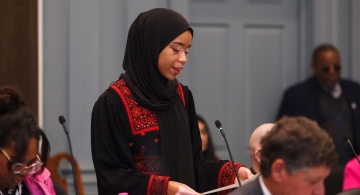Tackling Communications as a Small Org

Programming and fundraising are, understandably, the top priorities for most nonprofit and grassroots organizations; especially for small organizations/projects where two or so people are doing the jobs of 8+ people. A communications strategy, however, is the vehicle that helps extend your programming's reach and can drive in more fundraising opportunities. Storytelling, informed by a communications strategy, mobilizes and moves people to act.
We live in a time with unlimited access to multiple channels that can help us communicate with each other in lasting and impactful ways. Imagine the possibilities if you strategically utilize those channels and tools to compel more people to support your work which in turn elevates your programming and fundraising.
If you're ready, this simple communications strategy guide is a good place to start.
Identify Your Actors, not Your "Audience"
In this guide "audience" will be renamed to actors. The former reflects passivity and being acted upon while the latter reflects people whose actions can make a difference, according to the Center for Public Interest Communications. Referring to the people you want to reach as actors creates a more dynamic engagement with them as you become mindful of the reality of their ever-changing life-stages and perspectives.
Communicating effectively means knowing who your actors are and having their needs in mind as you curate social media posts, emails, and more. Communicating with mid-career professionals will be different from how you'd communicate with recent high school graduates—both have completely different needs and interests.
Map out who your actors are and what their needs might be by creating user personas, semi-fictional characters based on your current and/or ideal actor. Identify your actors by asking yourself questions like:
- What is this person's age and gender identity?
- What is their life-stage and what could that reveal about their needs and focus?
- Who/what trusted messengers (people/institutions actors like and want to engage with) will resonate with these actors?

Create Your Mailing List
You can use a Google or Excel spreadsheet to collect the names and emails of people (funders included) who've come in contact with your organization. This list can be formed using emails from events you've had. It also helps to segment your list into user personas, for example: donors/funders, new subscribers/event attendees, volunteers, etc. Creating a mailing list and segmenting your subscribers can help you personalize messages and calls-to-action to suit each audience segmentation.
Identify and Use Your Actors' Channel(s)
If your actors are mostly active on Facebook but you're more active on Twitter, that might be a signal to adjust your social media tactics and focus more effort on Facebook. Using channels and platforms that connect you with your actors requires learning what platforms your actors are more engaged with.
For example, Facebook users tend to skew older, Instagram users are mostly female and between the ages of 18 and 24, etc. Learning what demographic and purpose each platform serves can help greatly with both better engaging your current actors and connecting with your potential actors as well as creating content that resonates with them. These are some of the popular channels you can incorporate into your strategy:
- Social Media
- Newsletters
- Blog Posts
- Website

Make Time to Listen
Listening is an essential component of effective communication. Support your actors by engaging with their posts and responding when they respond to you. Including your actors' insights into your ongoing strategy and analytics can help a lot with this. Look out for ideas for new content by scrolling through your social media feed for posts (from orgs that do similar work to yours) that your actors create and engage with.
Take heart if you post something that no one engages with it. Go back to the drawing-board and tweak the message or try posting at a time when your actors might be most active online. Listening requires ongoing learning about what your actors engage with, and because your actors are complex people, this is always subject to change.
Aim for a Goal
Having a specific long-term or short-term goal can take your communications a long way. Aiming for a goal helps you actively, as opposed to passively, communicate and can be a morale booster. Here are some sample goals that you can aim for with your communications:
- Increased actor awareness of your organization
- X% growth in social media followers
- $$$ amount in small donor giving
- Call for volunteers
Once your goal is defined, you can create content that will help you reach your goal. Using analytics (most platforms and website hosts offer their own free analytics) can help with keeping track of your goal.
*These tips only give the basics of creating a communication strategy. While it is tempting to use every available channel, if you don't have the resources to run them, your strategy may fall through.
IPMF grantees seeking communications capacity building support can reach out to either Nuala or Samíl.
See the links below for a few of the works we used to inform this resource.

